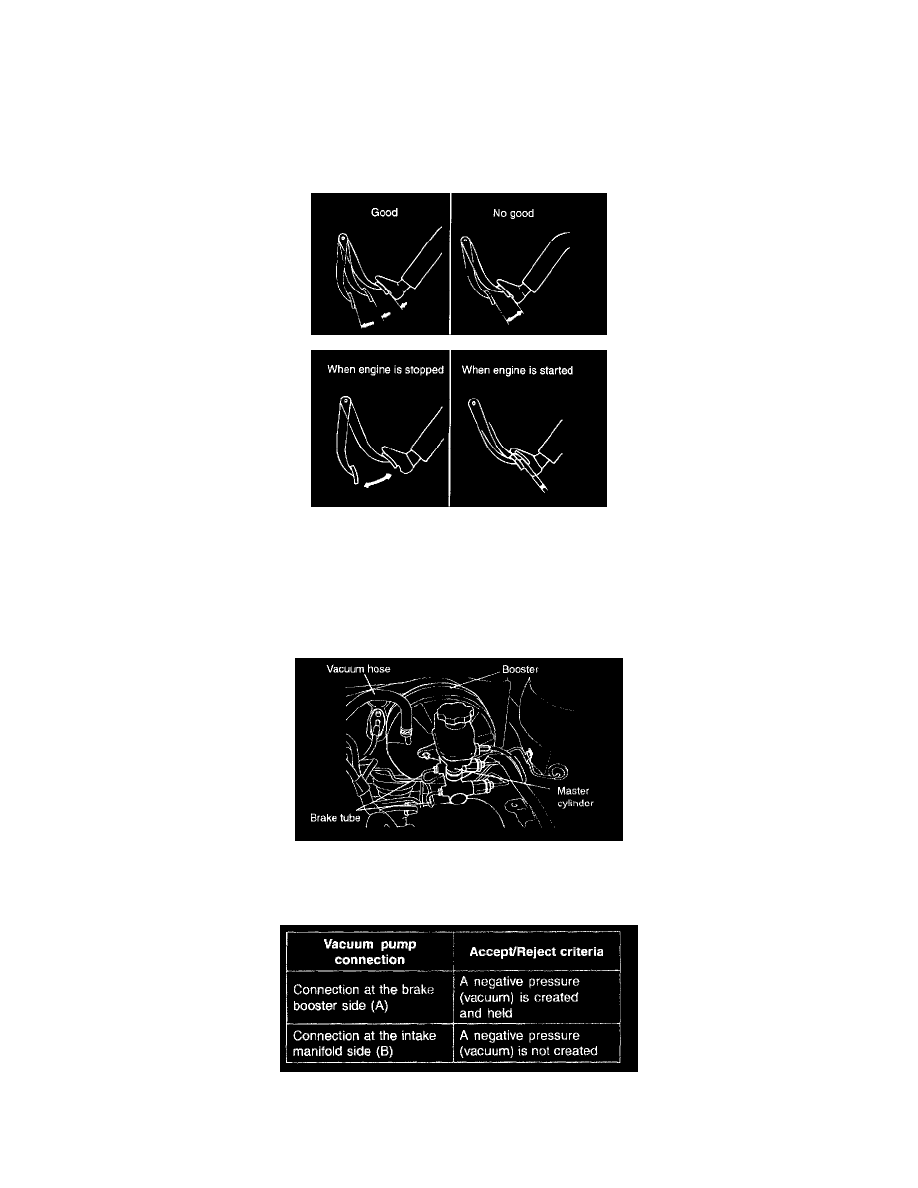Accent L4-1.6L (2003)

Vacuum Brake Booster: Testing and Inspection
BRAKE BOOSTER OPERATION TEST WITHOUT A TESTER
For a simple check of brake booster operation, perform the following tests.
1. Run the engine for one or two minutes, and then shut it off. Depress the brake pedal several times at normal foot pressure. if the pedal goes down
further at first but rises gradually after the second or third time, the brake booster is functioning properly. If the pedal height doesn't change, the
booster is damaged.
2. With the engine off, depress the brake pedal several times and check on the pedal height change. After that, with the pedal depressed, start the
engine. If the pedal goes down slightly, the booster is in good condition. If the pedal height doesn't change, the booster is damaged.
3. With the engine running, depress the brake pedal and then stop the engine. Hold the pedal depressed for 30 seconds. If the pedal height does not
change, the booster is in good condition. if the pedal goes up, the booster is damaged.
If one of the above three tests is not okay, check the vacuum hoses and the brake booster and make any necessary corrections. If all tests are OK,
the booster is good.
CHECK VALVE OPERATION CHECK
When checking the check valve, keep the check valve fit in the vacuum hose.
1. Remove the vacuum hose.
NOTE: The check valve is press-fitted inside the vacuum hose at the position of the marking.
2. Check the operation of the check valve by using a vacuum pump.
